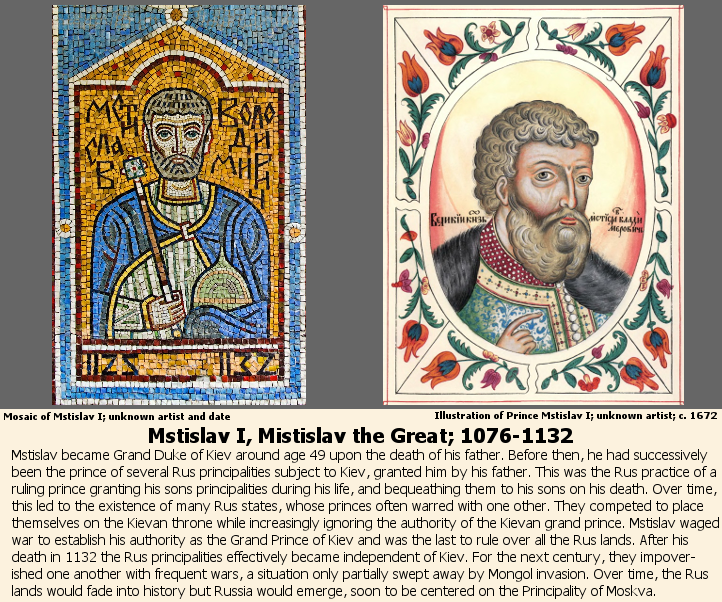

Mstislav I, Mistislav the Great; 1076-1132
Mstislav became Grand Duke of Kiev around age 49 upon the death of his father. Before then, he had successively been the prince of several Rus principalities subject to Kiev, granted him by his father. This was the Rus practice of a ruling prince granting his sons principalities during his life, and bequeathing them to his sons on his death. Over time, this led to the existence of many Rus states, whose princes often warred with one other. They competed to place themselves on the Kievan throne while increasingly ignoring the authority of the Kievan grand prince. Mstislav waged war to establish his authority as the Grand Prince of Kiev and was the last to rule over all the Rus lands. After his death in 1132 the Rus principalities effectively became independent of Kiev. For the next century, they impoverished one another with frequent wars, a situation only partially swept away by Mongol invasion. Over time, the Rus lands would fade into history but Russia would emerge, soon to be centered on the Principality of Moskva.
Comments
The Rus lands developed with Varangian rulers over Slavic subjects, a bit like England with Norman rulers over Anglo-Saxon subjects after the Norman Conquest of 1066. For a long time, the Varangians followed various Scandinavian traditions, like Prince Oleg nailing his shield to the walls of Konstantinoupolis ("Constantinople"), and named their children with Scandinavian names. However, the vast bulk of the population was Slavic and over time the Varangians assimilated with the Slavs. This can be seen with more and more rulers having Slavic names like Mstislav rather than Scandinavian ones like Oleg.